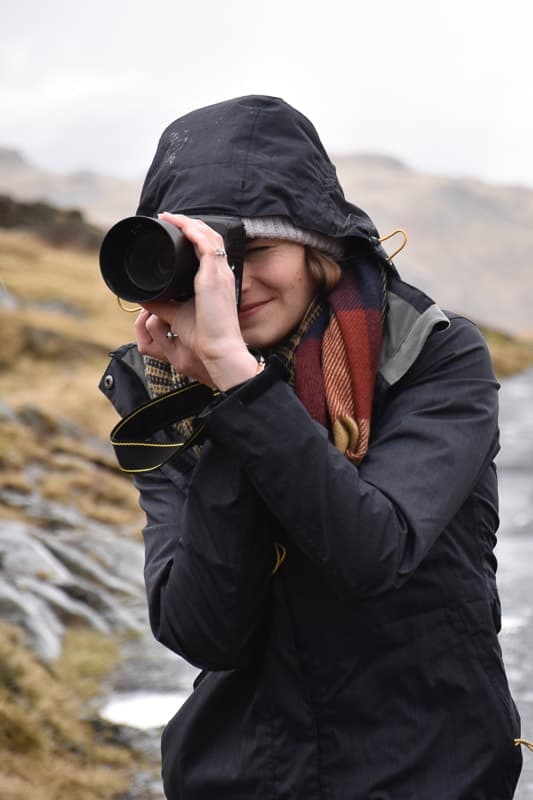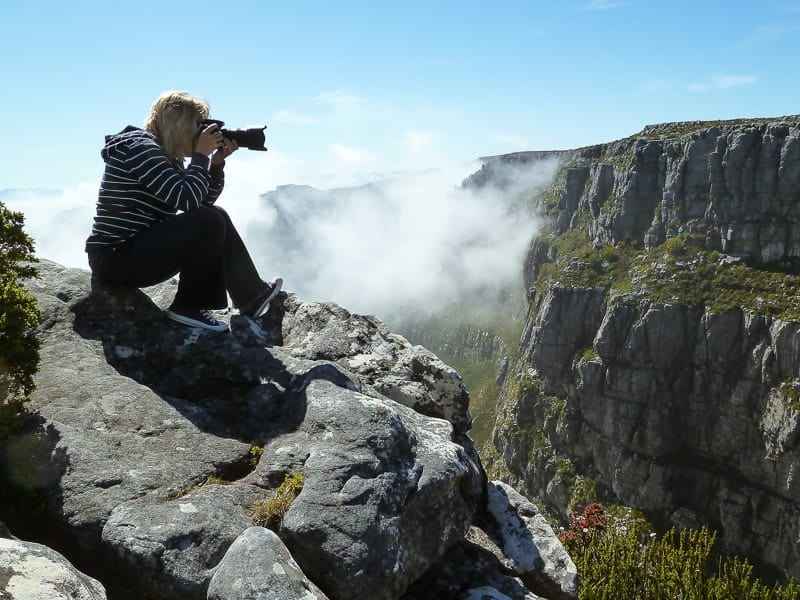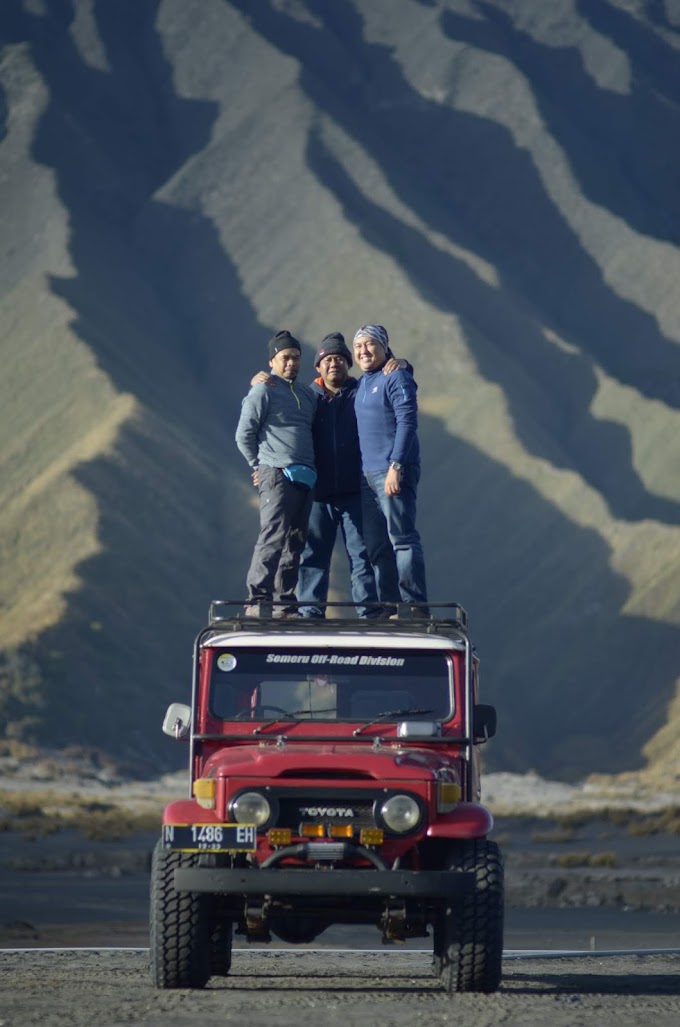Sumber: https://thelenslounge.com/how-to-hold-a-camera/
Things you need to know about photography, learning how to hold a camera is probably the easiest skill on the road to sharp images.
If you don’t hold your camera so that it is properly supported, you will experience camera shake and blurred photos. The blur might be significant, or it might just be minor, but why would you risk blurring a photo that you want sharp?
So, with that in mind, here’s how to be a human tripod!
How not to hold a camera
Let’s start with the most obvious way of how not to hold a camera. The lens makes the camera front heavy and that left hand is not supporting the lens at all.

So, how do you hold a camera?
Hold your camera like this, with the left hand doing most of the heavy lifting.

If you can’t hold your camera easily with just your left hand, you’re not holding it correctly.
Your left hand supports your lens and camera, zooms in and out and focuses manually. Aside, from being the support, it needs to be ready to do its operating thing at all times. Do you see how easily the thumb can reach some of the controls without moving your hand away from the lens?
Your right hand operates most of the controls on your camera, and offers additional support.
Can you see how the camera is almost resting in the left hand? Nice and comfortable. Her palm is facing up with the inside of her wrist facing her body.
She also has her left arm jammed up against her body to give extra support and prevent movement. Admittedly, it’s not always possible, because of some of the crazy positions you get into as a photographer, but as much as possible, keep that left arm against the front of your body.
Her thumb and middle finger are ideally placed to turn the zoom ring, and her thumb and index finger can easily turn the focus ring, while the rest of her hand still supports the lens and camera.
I have small hands and a sizeable camera, but I can easily support my camera body in the heel of my hand with my thumb and fingers around the lens.

When holding your lens like this, your thumb is ideally placed to operate the switch and buttons on the front left of your camera. Once you’re familiar with their functions, you will be able to do this without taking your eye away from the viewfinder. This is particularly helpful when photographing a fast changing situation.
What if you don’t use big lenses?
It may not be difficult to hold your camera incorrectly and not get camera shake when you have a 50mm lens on your camera. However, try holding a camera incorrectly with a 70 – 200mm zoom lens, zoomed to 200mm, and you can forget about taking sharp photos.
I was curious, so I weighed my Nikon D810 with my 70-200mm lens attached. It is just over 2.6kg! That’s a lot of weight to dangle in the air, unsupported without wafting it about.
You might not use a big lens now, but if you get used to holding your camera correctly now, you will automatically do it when you’re using a bigger lens.
Why is this the wrong way to hold a camera?
Clue – there are two reasons.

Photo credit: Joe Ridley / Beth Martin
Her lens is not supported at all. She has just her thumb below the lens with her fingers on top. Operating the zoom or focus rings would require her to lift her hand away from the lens entirely.
Also, her left arm is away from her body, so there is no rigidity to prevent movement. Can you imagine holding this position while you wait for exactly the right moment to take a shot? Or panning smoothly while you photograph a cyclist coming past? You’d be all over the place and your shot would not be sharp.
Let’s try another one.
Which photographer is holding his camera correctly?
Here’s a clue – he really wants to avoid camera shake.

Yep, the guy on the left, who, interestingly, is also using a tripod to support his camera.
The guy on the right has his fingers on top of the lens and his thumb underneath. The lens and camera are not supported, so he is risking camera shake, and he can’t get to the controls on the front left without taking his hand away from the lens.
What’s more, if he needs to make a change that involves accessing those controls, he would have to take the camera away from his eye, look at the controls, make his adjustments and bring the camera back up. With all that faffing about he might have missed the moment.
Can you spot the difference here?
Here we have two photographers taking a shot with the camera turned for portrait orientation (vertical).

Photo credit: Cameron Kirby

Photo credit: Joe Ridley / Beth Martin
You should have picked up that their left hands are different and first the photographer has her left hand in the correct position.
Did you notice their right hands are also different?
The second photographer has her right hand on top of the lens. The second photographer has her right hand squished up underneath her camera. She has turned her camera clockwise to take the shot instead of turning it anti-clockwise.
That’s also wrong. Do you know why?
There is virtually no support for her camera in this position. It is also not so easy to operate the dials and buttons on the front, top and back of the camera while shooting like this.
When you turn your camera to portrait orientation, if you’re not holding it correctly with your left hand, it is even more difficult to avoid camera shake.
The correct way from the side
Here’s a side view.

Here you can see the correct way to hold your camera in portrait orientation.
How about these photographers?
Can you spot the difference?


They both have their right hands in the correct position, but do you see the woman’s left hand? It is not supporting her lens and camera. The guy has got it right.
If at all possible, get even more support by supporting your supporting arm on something – lean on something or against something. If you’re sitting down, bend your legs and put your elbows on your knees.

This is me. Being a human tripod.
So, to recap.…… think tripod!
If you’re not already holding your camera correctly, have a little play with it to get used to it. Until it becomes natural for you, be conscious of your hand positions. Eventually you’ll develop the muscle memory so that you don’t have to think about it anymore. The less you have to think about while photographing, the more you can concentrate on creating the gorgeous images you want.
If you have any questions about how to hold a camera, let us know in the comments.
Also, we love good news, so if our beginner photography tips have helped you to understand why you need to hold a camera correctly and how to do it, share that too.




0 Comments